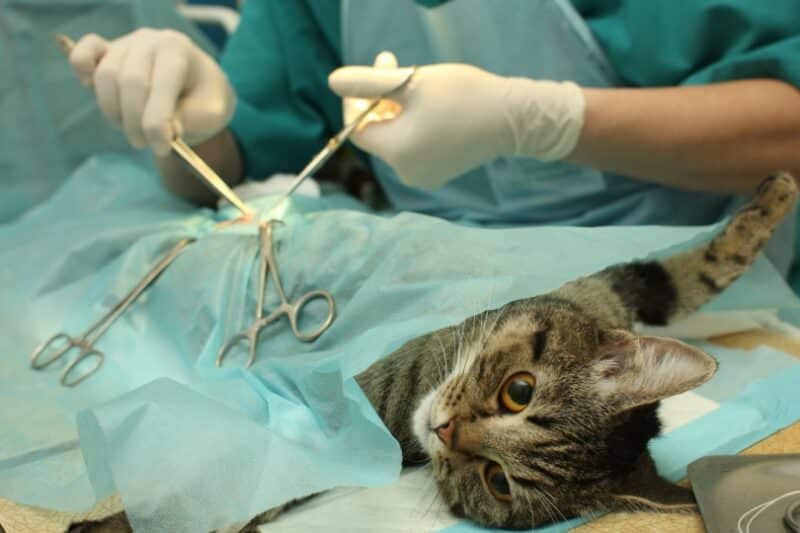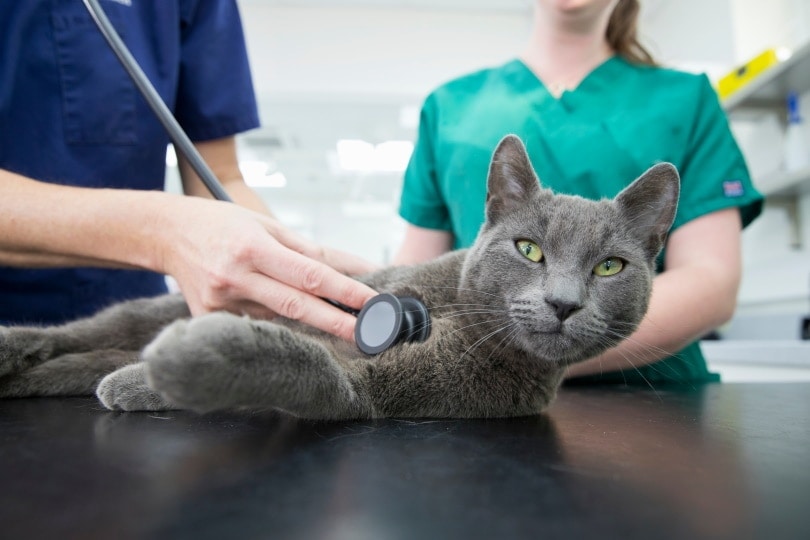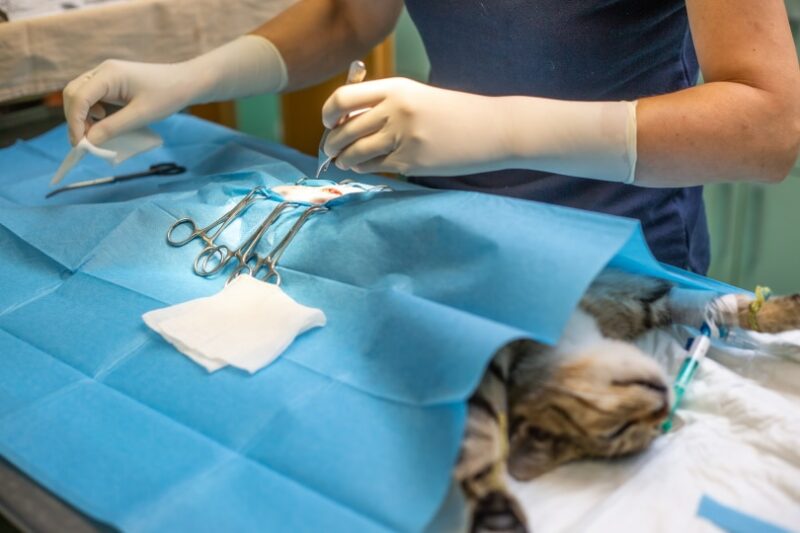If you don’t want to breed cats, it’s essential to consider a spaying or neutering procedure. While felines aren’t as expensive to own as canines, the costs still add up. It’s also something you can do to reduce your pet’s risk of chronic diseases, such as cancer, as well as reduce the number of cats that end up in shelters. The cost of spaying or neutering a cat in Canada can be between $125 and $200 just for the procedure, but there may be additional costs as well. Let’s learn more about the importance of spaying or neutering a cat and what costs you can expect in this article.
The Importance of Spaying or Neutering a Cat
Unwanted animals are an issue in Canada. The importance of spaying or neutering your cat is an excellent way to avoid contributing to the problem. Up to 10 million wild cats live in Canada, killing an estimated 150 million birds. The harsh climate keeps the feral feline population in check. However, the avian losses are potentially severe.
We think it’s the humane choice to spay or neuter your pet if you don’t want a household of kittens you’ll have to find reliable and loving homes for.

How Much Does Spaying or Neutering a Cat Cost?
Spaying or neutering is an invasive procedure. It involves anesthesia and hospitalization costs for either surgery. It’s also where the bulk of the costs lie. The female will likely have more aftercare than the male, which can affect the bottom line. You may have to take her back to the vet to remove the stitches if they’re not dissolvable. Many will comp these post-op visits.
| Place | Spay | Neuter |
| Quebec | $200 | $200 |
| Ontario | $125 | $125 |
| British Columbia | $140 | $149 |
Sources: Ontario Spays and Neuters, Pet Keen
Additional Costs to Anticipate
If you haven’t kept up with routine vet care, your vet will likely require that you bring your cat up to date with vaccinations and tests before they perform the procedure. That can add considerably to the cost. Assuming that’s not the case, you’ll have to pay for some pre-op bloodwork. It’s precautionary but necessary.
Blood tests can provide your vet with so much information. Many veterinarians will repeat blood work if the last ones done were over 30 days ago. Remember that they need the most up-to-date information to ensure the safety of the procedure.

When Should I Spay or Neuter a Cat?
Veterinarians usually recommend spaying or neutering pets over 6 months old. It helps to ensure the animals can endure the stress of these procedures and be strong enough through the recovery. We can also consider the time recommendation on an individual level. Surgery or even just going to the vet is stressful.
We suggest ensuring you have some extra time off from work to look after your cat. The first 48 hours are critical, even if your pet will likely sleep through most of them. Remember that time is of the essence when dealing with complications. Make things easier for you and your cat by being there when your pet will need you the most.
Does Pet Insurance Cover Spaying or Neutering a Cat?
This question is a sticky one. It appears like a smart choice since it safeguards the owner and animal. You’d think it’d be a no-brainer for an insurer to cover it. Unfortunately, that’s not true, at least with comprehensive coverage. Most companies consider it elective surgery and not a necessary procedure.
That puts it in the same category as cosmetic surgeries, like ear cropping. We think it’s a major disconnect that the industry must address to be relevant.

What Aftercare Is Necessary After Spaying or Neutering a Cat?
Tending to the sutures is your main task as a pet owner. Your vet will probably recommend a surgical collar to keep your cat from licking their wounds or stitches. It acts as a barrier to keep them from reaching these spots. It may seem like overkill, but it’s a necessary precaution that can speed your kitty’s recovery.
You’ll probably need to take your pet to the vet for at least one aftercare visit to make sure the sutures are healing properly with no signs of infection.
Conclusion
Spaying or neutering your cat is a necessary procedure. Luckily, it’s not expensive, with benefits that are far-reaching. We think it’s critical if you don’t plan on breeding your pet. It’s probably the best thing you can do as a responsible pet owner. Animal companions are part of the human experience. It’s our obligation to take this task seriously.
Featured Image Credit: Simon Kadula, Shutterstock











